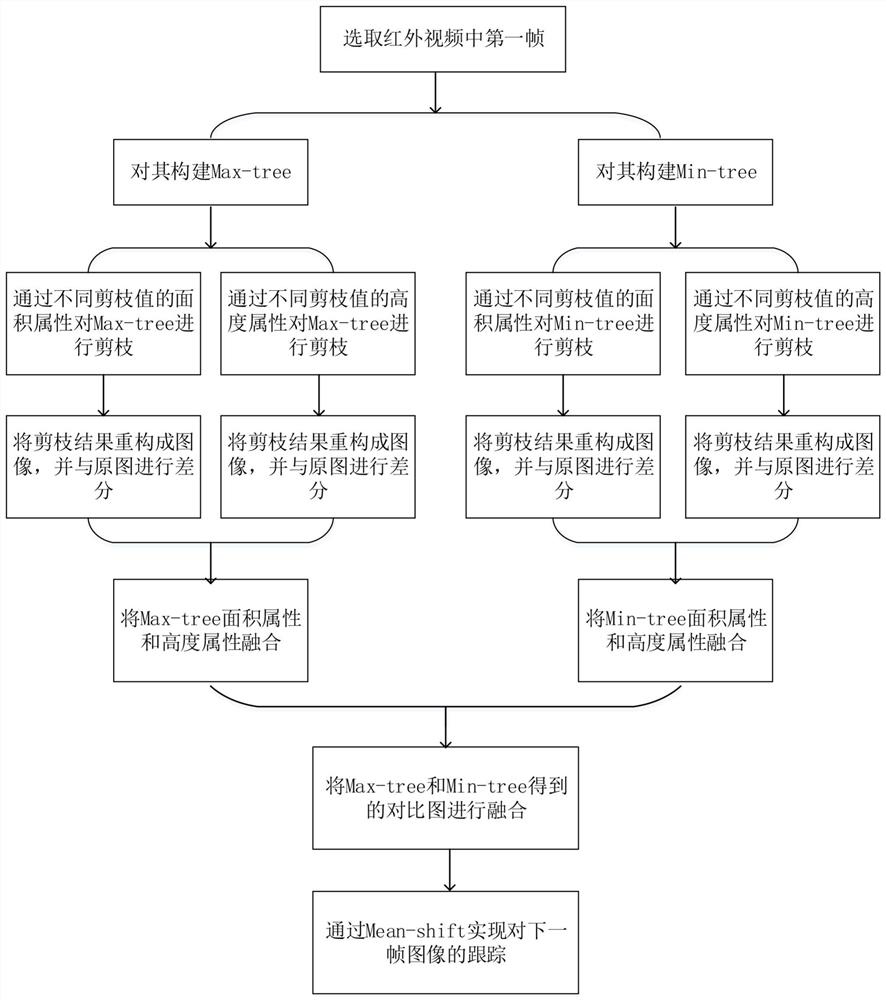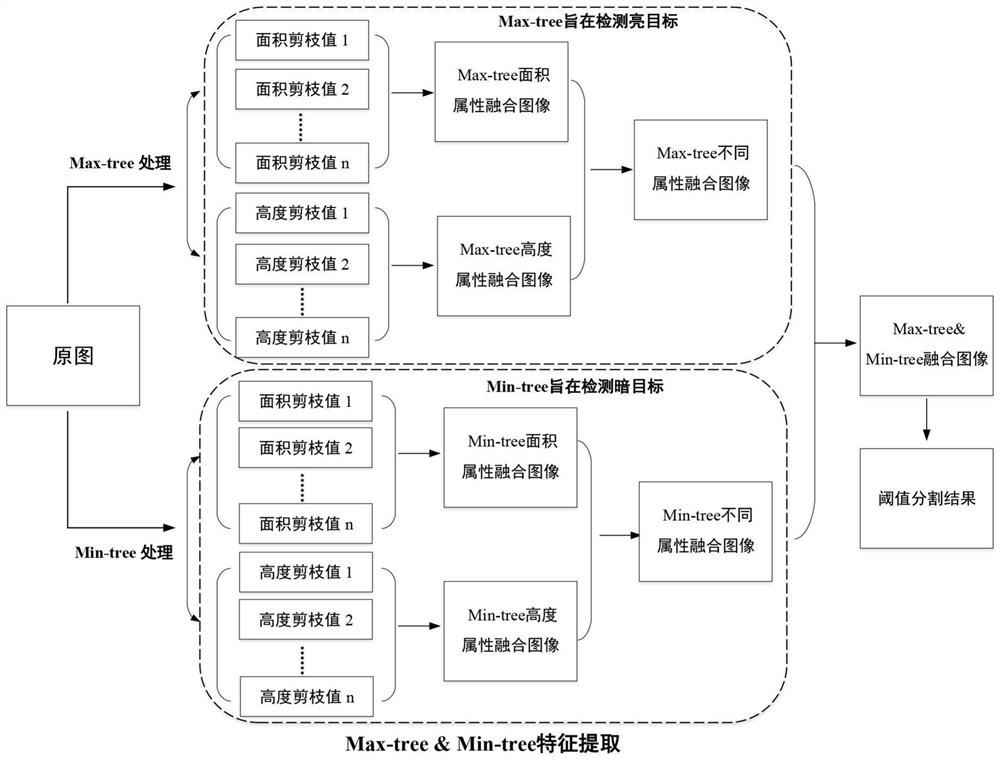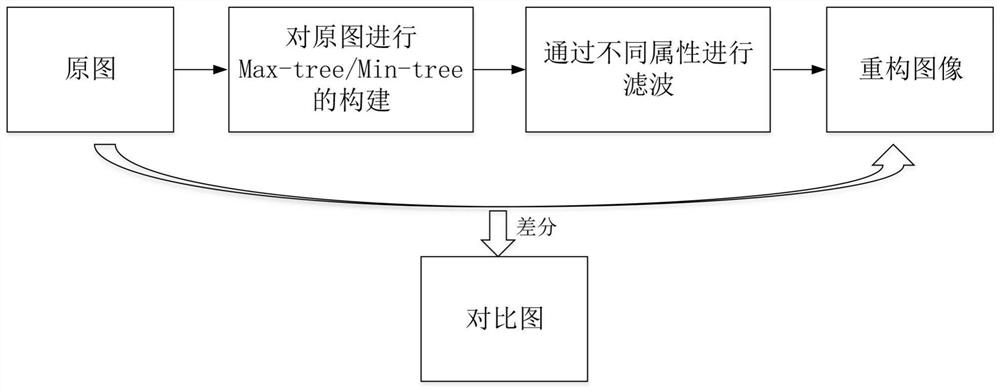A Method for Detection, Tracking and Recognition of Small Infrared Targets
A small target detection and recognition method technology, applied in image analysis, image enhancement, instruments, etc., can solve the problems of small target area, difficulty in reflecting texture information, lack of contrast and resolution of infrared images, etc., to improve signal-to-noise The effect of suppressing background clutter
- Summary
- Abstract
- Description
- Claims
- Application Information
AI Technical Summary
Problems solved by technology
Method used
Image
Examples
Embodiment Construction
[0032] In order to make the object, technical solution and advantages of the present invention clearer, the present invention will be further described in detail below with reference to the accompanying drawings and examples.
[0033] Such as figure 1 As shown, a small infrared target detection tracking and identification method specifically includes the following steps:
[0034] S1, select the first frame in the infrared video, denoted as I original , first sort the gray values in the infrared image from small to large, and sort the first frame of image I according to the sorting results original Establish a Max-tree. At this time, the area with the smallest gray value in the image is located at the root node, and the area with the largest gray value in the image is located at the leaf node.
[0035] S2, pruning the constructed Max-tree by area attribute. For ever-changing scenes, the size of the target whose gray value is brighter than the background is constantly chang...
PUM
 Login to View More
Login to View More Abstract
Description
Claims
Application Information
 Login to View More
Login to View More - R&D
- Intellectual Property
- Life Sciences
- Materials
- Tech Scout
- Unparalleled Data Quality
- Higher Quality Content
- 60% Fewer Hallucinations
Browse by: Latest US Patents, China's latest patents, Technical Efficacy Thesaurus, Application Domain, Technology Topic, Popular Technical Reports.
© 2025 PatSnap. All rights reserved.Legal|Privacy policy|Modern Slavery Act Transparency Statement|Sitemap|About US| Contact US: help@patsnap.com



